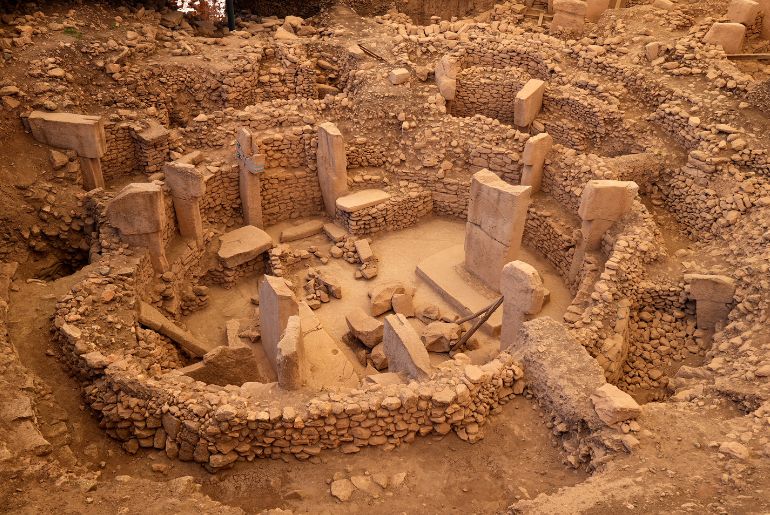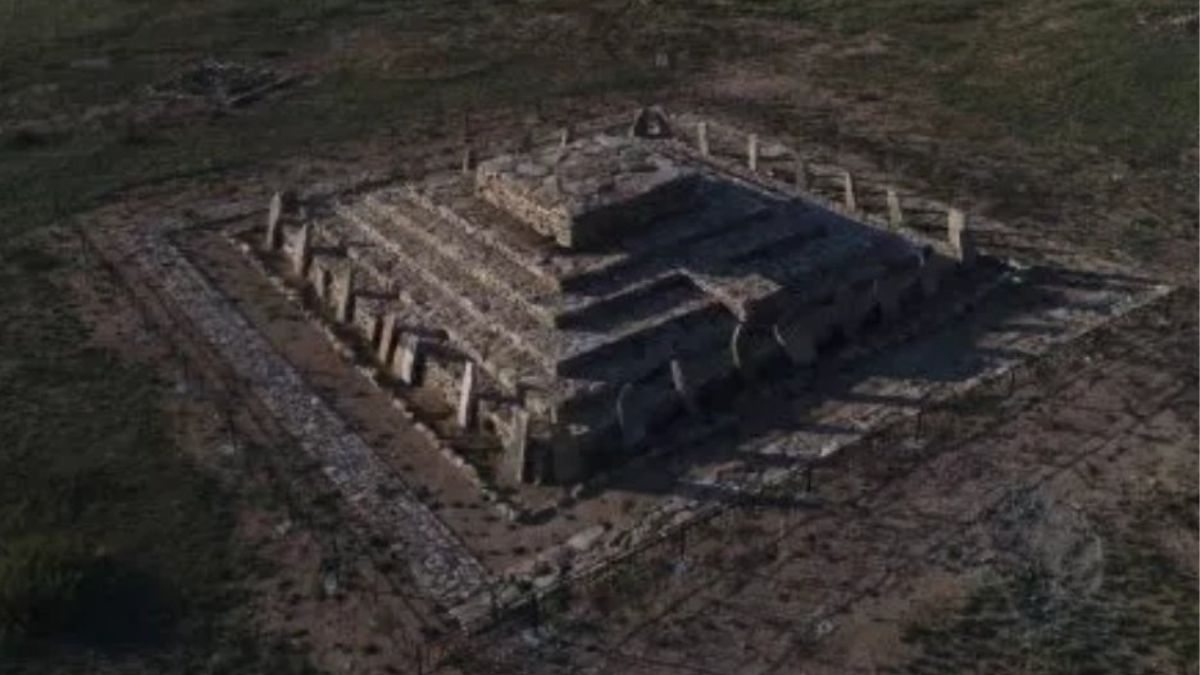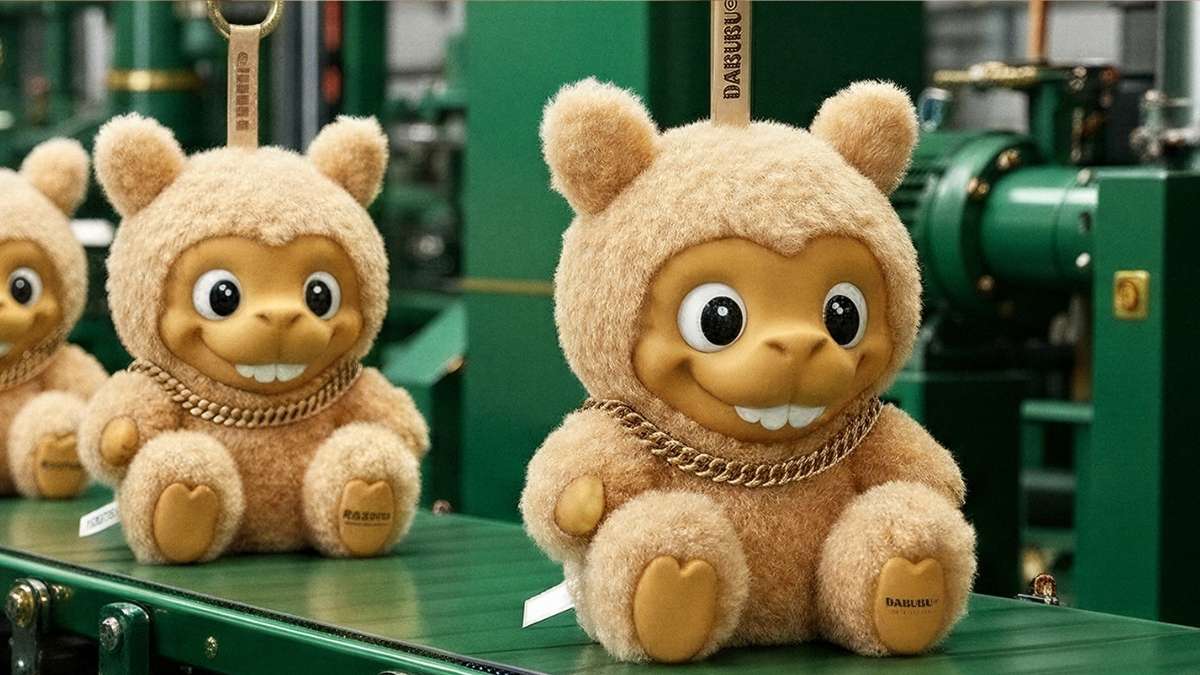If you’re a history aficionado or someone who just enjoys reading about old things being found, boy do we have a treat for you! Following are seven new archaeological discoveries made recently!
7 New Archaeological Discoveries Made Recently
1. Pyramid Dating Back To 3,000 Years Found In Kazakhstan
The pyramid of Karazhartas (3000years old) constructed by the Begazy-Dandibay culture which emerged in Central Kazakhstan during the late bronze age was discovered recently by archaeologists during excavations conducted along the Tardy river in the Karagnada region of central… pic.twitter.com/kLvb2Xykcm
— Bhoomi (@Bhoomi_facts) November 10, 2023
According to an article recently published by The Times Of India, this pyramid was created by the Begazy-Dandibay culture. It measures stands at a height of five feet and is 65 ft by 98 ft. The excavations were led by the Sary Arka Archaeological Expedition of Karaganda University. The pyramid is estimated to be around 3,000 years old and was discovered in the grasslands of Central Asia.
2. 832 Copper Coins From The Portuguese Era Found In Goa
826 ancient copper coins, dating back centuries, unearthed in Goa https://t.co/fGql0wv6mF
— Ravindra Sathe (@RavindraSathe56) November 16, 2023
A cashew farmer in Goa recently discovered around 832 copper coins belonging to the 16th or 17th centuries. As per an article recently published by Outlook Traveller, the archaeology department will carbon-date the coins soon. It may give important insights into the numismatic history of Goa. Once thorough research is carried out on the coins, they will be housed in the Goa State Museum in Panjim.
3. Evidence Of Previously Unknown Language Found In The Middle East
A previously unknown #language discovered.
Archaeological #research in the #MiddleEast is revealing how a long-forgotten #ancientcivilization used a language to promote #multiculturalism and #politicalstability.#ScriptaManent— Alessio Brancaccio 🐺 (@bralex84) November 16, 2023
An article recently published in The Independent stated that an ancient Middle Eastern civilisation used previously unknown and undiscovered linguistic tools. These tools were primarily employed to promote political stability and multiculturalism. The evidence suggests that Hittite leaders directed their civil servants to study the religious practices and liturgies of its subject peoples.
Also Read: Archaeologists Discover 4000-YO Polychrome Wall & 3000-YO Tomb In Peru; Why Is It Significant?
4. Mini-Temples And Sacrificial Pit Discovered In Haltern am See, Germany

Two mini Roman temples have been found near the border between Germany and the Netherlands. Archaeologists from the Westphalia-Lippe Regional Association made this discovery. According to an article recently published by Arkeonews, the discovery dates back to the age of Caesar Augustus. The clay foundations of the temples, which were all that remained, spanned a total area of 100 square feet.
5. Astonishing New Details Discovered Abour St. Pancras Workhouse In London
Discoveries suggest St Pancras workhouse that may have inspired work of Charles Dickens was intended to be place of comforthttps://t.co/MLgf9CN7Gy
— Henry Malt 😻🐧 (@artbookreviews) November 16, 2023
Archaeologists from the Museum Of London Archaeology or MOLA have made astonishing discoveries about the workhouse that dates back 200 years. They found that it was meant to bring comfort to the people who lived there and was meant for people who were down on their luck. The interiors were sparse but it was still meant for rehabilitation and support. It is also theorised that the building inspired and was featured in a few works of the great writer, Charles Dickens.
6. Burial Mound Discovered In Norway
Huge burial mound in Norway stumped archaeologists. Now they know what’s inside (hint: it was a ship grave, the oldest in all Scandanavia). https://t.co/mmUXmUVqAO
— 🏳️🌈 Chuck Hamilton (he/him/his) 🏴☠️🍸 (@natty4bumpo) November 15, 2023
While exploring Herlaugshaugen, a group of archaeologists came across an ancient burial mound. It was located on the island of Leka. According to an article recently published by The Times Of India, this particular burial mound may be the resting place of the great King Herlaug. The mound dates back 700 years and is 200 feet wide. The age of the mound was much older than expected.
7. Copper Coins From The 2nd Century AD Discovered In Mohenjo Daro
A team of experts has announced unearthing a pot full of #CopperCoins from the Divinity street on the Western side of #Mohenjodaro stupa, which they saw as the first remarkable discovery of artefacts at the 5,000-year-old city remains after 93 yearshttps://t.co/LkAyqbHTKQ
— Sikandar Ali Hullio (@HullioSikandar) November 17, 2023
This discovery is especially shocking since it is the first major discovery at the site in 93 years. Dr Syed Shakir Shah, who is the Director of Archaeology at Mohenjo Daro, led the team that discovered the copper coins. They date back to 2 or 5 Century AD. The coins were all stuck to each other and it all weighed more than five kilogrammes.
Also Read: Israel Archaeologists Discovered 5,500-Year-Old Gate; Tagged As The Oldest Structure Ever Found
Which of these discoveries did you find most fascinating? Let us know in the comments section below!
Cover Image Credits: @Bhoomi_facts/X (Formerly, Twitter)
For more such snackable content, interesting discoveries and the latest updates on food, travel and experiences in your city, download the Curly Tales App. Download HERE.
Good news! We are on WhatsApp! Subscribe to Curly Tales WhatsApp Channel to stay up-to-date with exclusive content and BTS. Join HERE.
First Published: November 17, 2023 12:10 PM



